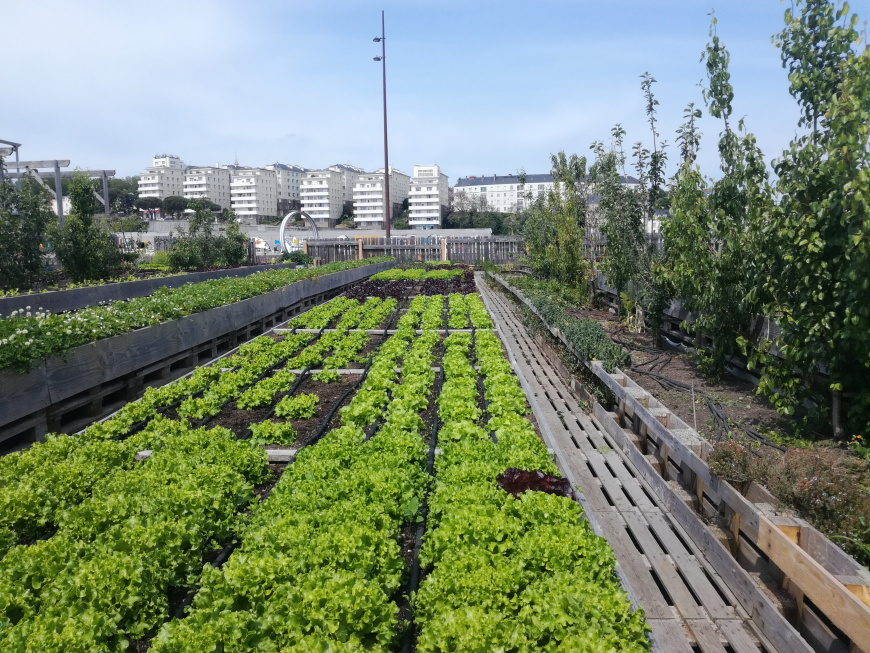The Single Strategy To Use For City Blooming
The Single Strategy To Use For City Blooming
Blog Article
The Of City Blooming
Table of ContentsThe Ultimate Guide To City BloomingCity Blooming - TruthsCity Blooming Fundamentals ExplainedAll about City BloomingGetting The City Blooming To Work
Fascinated in growing food offer for sale in the City of Chicago? Considering starting a neighborhood garden? Modifications to the Chicago Zoning Regulation enable agricultural usages like area gardens and city ranches in several parts of the city. Below is a list of frequently asked questions concerning the regulations and guidelines that farmers should consider when preparing a metropolitan agriculture task.
The zoning modification does not modify any type of other codes dealing with composting, building authorizations, purchasing or leasing City owned residential or commercial property, organization licenses or ecological contamination. There are existing codes that manage these problems and they stay in full result and may be applicable to your project. Area yards are typically had or managed by public entities, civic companies or community-based companies and kept by volunteers.
Urban ranches grow food that is intended to be marketed, either on a not-for-profit or for-profit basis. As a result of their commercial function, city farms require a service license. Yes. A community yard is permitted to market excess produce that was grown on website if the sales are accessory or secondary to the yard's key function explained above.
The Facts About City Blooming Uncovered
Composting is enabled but just for plant product that is created and made use of on website. The amount of garden compost material can not surpass 25 cubic yards at any offered time according to the standards in 7-28-715 of the City's Municipal Code. Yes. Due to the fact that the dirt at the majority of new garden sites requires changing, garden compost, dirt, timber chips, or other products can be obtained to create or enhance the expanding room - indoor plants.

If a building permit is needed then the hoophouse will be thought about an accessory building. You can learn even more regarding the structure authorization needs by getting in touch with the Division of Buildings. The 25,000-square-foot dimension limitation is meant to stop a solitary area garden from dominating a provided block or diminishing the block's existing residential or business personality.
The limitation does not use to yards situated in Public Open Area (POS) districts. Can there be greater than one neighborhood garden that is 25,000 square feet on a single block? Yes. The size limitation puts on specific yards, not to individual blocks. No. Fence is not called for, however, yards that have large parking lot might be called for to install fencing or other landscaping features.
The smart Trick of City Blooming That Nobody is Discussing
B1 & B2 areas need that all commercial use activities be performed indoors. Is fencing needed for urban ranches? Fences may be required, along with landscape design and screening, for specific car park locations and outside work or storage areas depending on place and the details activity taking place.
Urban farms call for structure permits and zoning approvals prior to construction (sustainable gardening). Other forms of city evaluation might be needed depending on specific frameworks, tasks, dimension, landscape design, licensing, public heath and stormwater management concerns.
The Division of Organization Affairs and Customer Protection can help figure out the particular kind of service certificate that's called for. Off road car park is required for the majority of commercial projects in Chicago. The needed number of parking areas is based on the number of employees functioning on website and not the square footage of the growing room.
Some Known Details About City Blooming

A city farm can market compost material produced on site, nevertheless, the operation should conform with the guidelines in 7-28-715 of the Chicago Municipal Code. Aquaponic systems are permitted inside your home on city farms in several zoning areas.
As much as 5 hives or nests of honey might be maintained as an accessory use. Nonetheless, beekeepers have to sign up with the Illinois Department of Agriculture. To find out more about the recommended zoning modification you may speak to the Division of Housing and Economic Development, Bureau of Planning and Zoning at 312.744.8563.
, which takes area in rural areas at the edge of suburban areas.
The Facts About City Blooming Uncovered
, who look for to form social networks started on a common ethos of nature and community holism. These networks can create by method of formal institutional support, coming to be integrated right into local town preparation as a "shift community" motion for sustainable metropolitan development.
The much more direct accessibility to fresh vegetable, fruit, and meat items that may be understood with metropolitan agriculture can enhance food safety and food safety and security while reducing food miles, causing lower greenhouse gas discharges, consequently adding his response to climate change reduction. A few of the first evidence of city agriculture originates from Mesopotamia.
Report this page